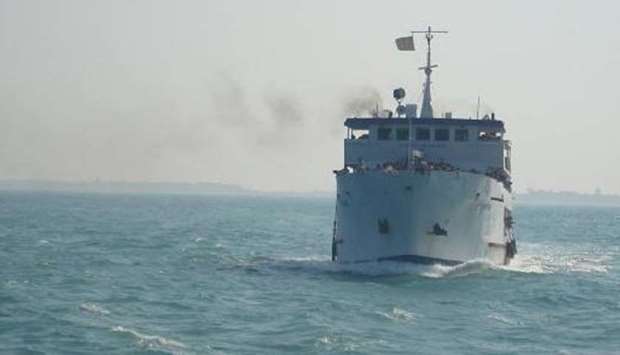The Bangladesh navy said Friday it has rescued 24 more fishermen from the Bay of Bengal, bringing the total to 80 since a cyclone pounded the country's coastline three days ago.
Two naval vessels plucked the fishermen from waters near Cox's Bazar and Kutubdia island -- two of the areas worst hit by the storm.
‘Members of the navy rescued them as they were floating in the sea,’ a spokesman for the navy said.
At least 70 fishermen are still missing.
The navy has deployed 18 ships to conduct an extensive search and rescue operation across Bangladesh's entire maritime territory in the Bay of Bengal after Cyclone Mora killed seven people and destroyed thousands of homes.
The ships are also carrying food, emergency relief and two medical teams to hard hit Kutubdia and Saint Martin's Island.
A navy helicopter and a maritime patrol aircraft are conducting aerial searches for survivors, it said.
As the cyclone advanced on Bangladesh, local authorities increased the maritime threat to its highest level and ordered all fishing vessels to remain at port.
Mushtaq Ahmed, a fishing industry representative in Cox's Bazar, said eight boats had failed to return.
‘We thanked the navy for rescuing our men. But still 70 fishermen and eight boats are missing. We hope they'll continue the search operation until the last fisherman is accounted for,’ he told AFP.
He said the fishermen could be moored on a island or adrift at sea. In the past most of the fishermen returned to their fishing ports within a week or two.
Bangladesh suffers frequent cyclones and fishermen are often reported missing only to be found in their villages after the storm has subsided.
Ahmed said it was the first time the navy had conducted such an extensive search operation for missing fishermen after a cyclone.
Earlier this week an Indian navy ship rescued 33 Bangladeshi survivors and handed them over to the local authorities.
Cyclone Mora came after heavy rains in Sri Lanka caused the worst flooding the island has seen in well over a decade, killing more than 200 people.
South Asia is frequently hit by flooding in the summer with the arrival of the annual monsoon rains.



